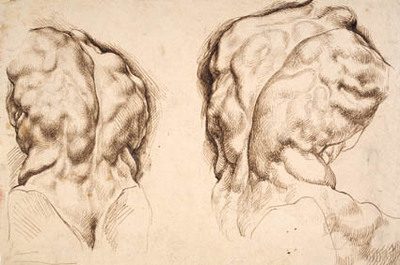Longing for what we have lost 3.1
Art and the ideal beauty
Describing beauty

Winckelmann’s writings manifested an unprecedented understanding and appreciation of ancient art. His descriptions of sculptures commented on beauty of form and figure and on how well the artist had realised an ideal. In addition, Winckelmann described its intellectual, emotional and physical effects on him, the viewer. Of the Belvedere Torso, one of the most celebrated statues in Rome in his day, he writes
By a mysterious art, our mind, through all these feats of the hero’s force, is led to the perfections of his soul; a monument which you in vain look for among the poets; they sing the power of his arms alone.[1]
In his in-depth, poetic description of the Torso he is fascinated with the masculine beauty of its muscles:
When from the first movings of the sea, a gentle horror glides over its smooth surface, and undulating, as they rise, the waves play, absorbing each other and again refunded: thus waving, thus softly undulating flows each muscle into the next, and a third that rises between them, dissolves itself amidst their gentle conflict, and, as it were, escapes our eye.[2]
The Torso had been studied and sketched by many artists before Winckelmann, including Michelangelo and Rubens. Winckelmann’s description takes inspiration from these earlier treatments of the sculpture.
[1] Winckelmann, 1765, 462 Annual Register
[2] Winckelmann, 1765, 462 Annual Register
→ 3.2. Nature and the ideal
